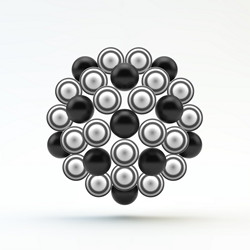Molecular modelling of metal-organic frameworks
Consisting of 3D and periodic networks of metals, metal clusters or metal-oxide clusters held together by organic linkers, metal-organic frameworks (MOFs) exhibit a wide variety of unique properties. Not surprisingly, MOFs find applications from gas storage and catalysis to photovoltaic and drug delivery systems. The range of components available to synthesise such complex structures is, however, is so vast that it is difficult to predict which MOF has the desired properties for specific applications. The use of a generic force field derived for molecules such as proteins and hydrocarbons offers a means of rapidly screening material compositions. With EU funding, the project GA MOF (An optimised genetic algorithm to computationally predict a metal-organic framework to separate helium from methane) was initiated to improve on the existing universal force field (UFF). The aim was to extend UFF to describe the common MOF motifs accurately and in this way help their rational design. GA MOF scientists extended the original UFF parameter set to include transition metal elements Zn, Cu, Ni, Co, Fe, Mn, Cr, V, Ti, Sc, and Al. The reference geometries used in deriving the force field parameters of the new atom types as they appear in inorganic metal clusters were obtained from experimental data or density functional theory calculations. The new force field has been named UFF4MOF and is linked with the Automated Topological Generator for Framework Structures (Autografs) for building MOF structures from arbitrary building blocks. By the end of the GA MOF project, the Autografs database included 68 different topologies, 28 connectors and 83 linkers. Together with information on molecular building blocks extracted from common MOFs, over 10 000 distinct framework structures can be constructed. The Autografs software has been released as open source and can be downloaded here. The GA MOF team has already negotiated with an industrial partner the possibility of providing a supported software release helping researchers to conveniently build framework structures of direct interest to their work.
Keywords
Molecular modelling, metal-organic frameworks, force field, framework structures, Autografs

